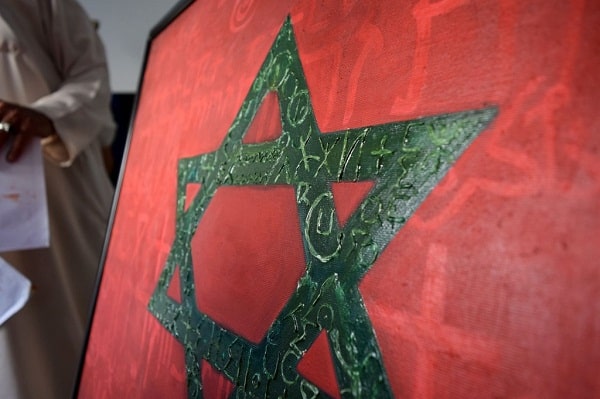[dropcap]M[/dropcap]orocco is one of the most culturally rich countries in the world due to its extensive history; one major reason for its rich cultural heritage is due to the fact that numerous empires controlled the country over the centuries, and each ruler established different policies toward the foreign communities occupying the territory. Because of this history, Morocco today is an infusion of numerous different peoples, religions, cultures, and traditions from throughout the world, and these diverse cultures are still evident in the culture today. These cultures include the native North African Amazigh/Berber people, the Gnawa people who came from Sub-Saharan Africa, Arabs, Europeans, and until recently a large Jewish population.
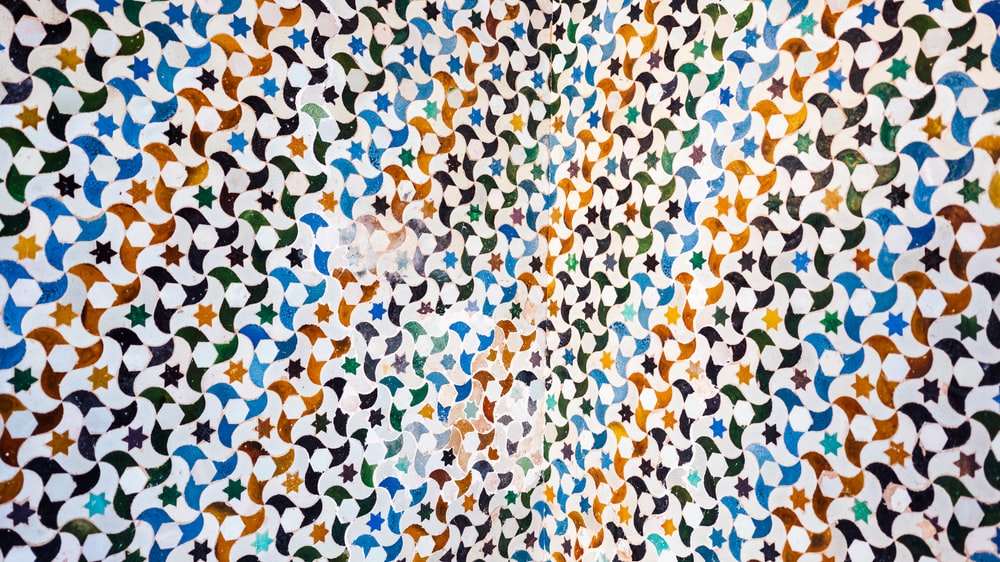
[ads1]
Plural Morocco
This unusual cultural infusion which is at the origin of the Moroccan proverbial sense of tolerance, communion and togetherness is reflected in the Moroccan hospitality concept mrahba and acceptance of the other in his otherness. Over 5,000 years of its known history, the country has always been the crossroad of many cultures and religions that it has adapted in its millennial civilization with a great sense of pride. In the northeastern part of Morocco, in the village of Tatoft, there lives a music “rock” band: The Master Musicians of Jajouka, considered to be 4,000 years old and the infusion result of Greek and Roman deities, pagan in nature, Judeo-Amazigh mystic trance music and Islamic Sufi influence. Today, Jajouka, an icon of world music reflects faithfully the plural aspect of Moroccan culture. But that is not all, this multiculturalism has been inscribed in gold in the post-Arab Spring constitution of 2011 through the integration of ethnic communities:
Preamble:
« A sovereign Muslim State, attached to its national unity and to its territorial integrity, the Kingdom of Morocco intends to preserve, in its plentitude and its diversity, its one and indivisible national identity. Its unity, is forged by the convergence of its Arab-Islamist, Berber [amazighe] and Saharan-Hassanic [saharo-hassanie] components, nourished and enriched by its African, Andalusian, Hebraic and Mediterranean influences [affluents]. The preeminence accorded to the Muslim religion in the national reference is consistent with [va de pair] the attachment of the Moroccan people to the values of openness, of moderation, of tolerance and of dialog for mutual understanding between all the cultures and the civilizations of the world. »
[ads1]
The Moroccan cultural pluralism is reflected faithfully more in the religious attributes of the monarch. He is and has been, since the Idrissid dynasty of the 9th century, amir al-mu’minin « Commander of the Faithful » and not the « Commander of Muslims » exclusively, as one would probably expect :
Article 41 :
« … The King, Commander of the Faithful [Amir Al Mouminine], sees to the respect for Islam. He is the Guarantor of the free exercise of beliefs [cultes]. He presides over the Superior Council of the Ulema [Conseil superieur des Oulema], charged with the study of questions that He submits to it. The Council is the sole instance enabled [habilitée] to comment [prononcer] on the religious consultations (Fatwas) before being officially agreed to, on the questions to which it has been referred [saisi] and this, on the basis of the tolerant principles, precepts and designs of Islam. The attributions, the composition and the modalities of functioning of the Council are established by Dahir [Royal Decrée]. The King exercises by Dahirs the religious prerogatives inherent in the institution of the Emirate of the Faithful [Imarat Al Mouminine] which are conferred on Him in exclusive manner by this Article. »
Accompanying this diverse population of people were the religions of Islam, Judaism, and to some extent repercussions of Christianity from Europe. Because these cultures and religions coexisted in close proximity for such a long period of time, in the long run they came to share mutual practices that all sects claimed to own; one major area which shared commonalities among the different religions and peoples are Morocco’s saints and spirits.
[ads1]
When the Megorashim Jews were kicked out of Spain after the Reconquista, they were received with open arms by the Amazigh dynasty of the Wattasid bearing in mind that Morocco was already the home of the Tovashim Jews that came in the year 70 AD, after the destruction of the Second Temple by the Romans. These early migrant Jews were welcomed by the Amazigh/Berber native inhabitants with whom they shared such social traits as tribalism and matriarchy. The Jews soon “melted” into the Moroccan culture and, as a result, of their tolerance and togetherness, they are responsible with the Amazigh/Berber people for the inception of values of tolerance, still strong today, thanks to the Judeo-Amazigh Cultural Substratum, a cultural concept unique to Morocco in the region.
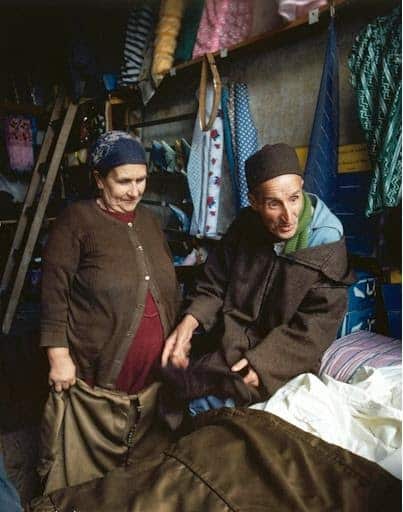
century as “Little Jerusalem” because of the high concentration of Jews in the town
On the Moroccan religious tolerance and the endeavors of the country to rehabilitate its Jewish legacy , The Economist writes:
« When Jews were expelled from Spain and Portugal in the 15th century, many fled to Morocco. The Jewish population in the kingdom rose to over 250,000 by 1948, when the state of Israel was born. In the ensuing decades, as Arab-Jewish tensions increased, many left. Fewer than 2,500 remain still more than anywhere else in the Arab world.
No Arab country has gone to the lengths of Morocco to revive its Jewish heritage. The kingdom has restored 110 synagogues, such as Slat Lkahal, which opened in Essaouira during the festival. A centre for Judeo-Islamic studies is set to open in the old kasbah later this year. The kingdom also boasts the Arab world’s only Jewish museum. “We used to have a six-pointed star on our flag and coins, like Israel,” says Zhor Rehihil, the curator (who is Muslim). “It was changed under French rule to five.” »
Shared mysticism
Two major religions that shared spiritual and cultural practices and still continue to do so today are Islam and Judaism. Although in the 20th century many of the Moroccan Jews moved out of the country to either Israel to Europe, they still maintain rich cultural traditions that date back to ancient times in Morocco. According to Moroccan Muslim collective memory, Moroccan Jews are native to the country, pre-dating the arrival of Islam, and essentially going back to the beginning of recorded history, a status rarely enjoyed by Jews elsewhere. The ancient history of Jews of North Africa, in general, and Morocco, in particular, is underpinned by a corpus of legends drawing on very old and rich oral traditions.
One major area in which Judaism and Islam shared commonalities and still do today is in the arena of spirituality and sainthood. These common attributes are visible in numerous ways, including mystical practices, the worshipping of saints, as well as Moroccan folklore; they are all evident amongst the Arab, Amazigh/Berber, Gnawa and Jewish populations. The analogous mental structures of the Jewish and Muslim (Arab and Amazigh/Berber) populations have given rise, in the Maghreb, to a literature and a folklore in which the Jewish cultural substratum and the Arab-Amazigh/Berber heritage combine together in an original creation.
[ads1]
Today, saints are still a popular part of Moroccan culture, and many saints are shared in both the Islamic and Jewish traditions; presently, Moroccans worship over 100 saints that are considered holy in Islam and Judaism and whose origins can be traced from Jewish tradition. One great example of this phenomenon that still exists today is a Rabbi of Moroccan origin that is credited with founding the Chavrei Babakuk community, which transformed into a Jewish religious sect called Moroccan Hassidism; this group is still present in Israel today. This Rabbi is considered a saint in the Moroccan Hassidic tradition, and Jews as well as many Muslims consider him as holy, for he “embodies simultaneously images of Moroccan saints and Ashkenazi Hassidic rabbis”.
One interesting aspect of this saint in particular is the culture of pilgrimage that surrounds his followers both in Morocco and Israel.
“Moroccan and other North African Jews developed a special tradition of pilgrimage and hilluloth [memorial feasts] at saints’ graves. In Israel, Moroccan immigrants have preserved and revived this tradition”.
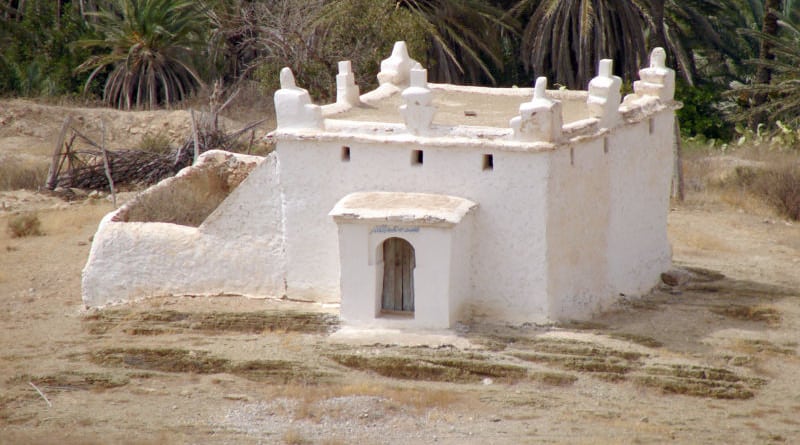
Moroccan saint’s shrine
Although it is not explicitly stated that this rabbi is a declared saint in the Islamic tradition, many aspects of worship that surround him in the Muslim community are common to the worship of other Muslim Moroccan saints. Additionally, the concept of the veneration of saints is common to both Jews and Muslims in Morocco, and the way the practice is carried out is explicit and unique to North Africa. In order to fully understand this concept of saints and veneration, it is important to define what a saint is in Moroccan culture, in order to not confuse this conception with other interpretations of sainthood in different religious traditions:
“Veneration of saints plays a central role in Moroccan Jewish life and is an important component of their ethnic identity… [a] saint possesses supernatural powers which enable him to influence events and people and to intercede with God on their behalf. These powers do not fade when the saint dies and can continue to benefit his adherents. Among Moroccan Jews, faith in saints is strongly entwined with the Jewish mystical tradition and with the Maraboutistic element that characterizes North African Islam. What differentiated these… from ordinary mortals was their ability to perform miracles; to cure the sick, eliminate danger, protect, and rescue. A person who had received a miracle often became the saint’s ‘slave’: that is, a special relationship developed between the saint and the “slave” who submitted completely to the saint and accepted his every pronouncement”.
An example of the good interfaith dialogue and understanding in Morocco can be witnessed in the city of Sefrou, situated thirty kilometers south of Fes. In Sefrou, Muslims and Jews lived side by side in harmony for centuries, and often practiced their religious rituals in such harmony with each other that it was difficult to tell what was Islamic and what was Jewish.
They even venerated the same man, whom many considered a saint, buried in a grotto in a neighboring mountain. The site was tactfully called Kaf al-moumen (the grotto of the faithful) because it was a religious sanctuary for both Muslims and Jews, and times for worshipping in this area were equally divided, the year around. However, many local people believe that it is the same saint and not two different saints and this examplifies beautifully the sense of togetherness and communion among the two religious communities As such, the Amazigh/Berbers, Arabs and Jews of this mythical city and capital of religious coexistence are the forfathers of the Judeo-Amazigh/Berber cultural substratum, which is origin and inspiration of the Moroccan tolerance.
The example of Sefrou is not unique; it is found in other places such as Debdou, Azrou, Fes, Rabat, Meknes, and Marrakesh, among others. Communities of Jews lived and practiced their faith in all these places in complete peace and harmony. They were, in principle, full Moroccans, and as such enjoyed the full rights and obligations like their Muslim brethren.
In what regards such aspects of tolerance and coexistence Hind Al-Subai Al-Idrisi writes in Qantara :
« Morocco is considered one of the most stable countries of the region, with more or less peaceful co-existence between the various religions and cultures that make up the Moroccan social fabric. As a testament to this, the city of Fez, classified by UNESCO as part of the global human heritage, held a significant event on 13 February 2013: the inauguration of the newly renovated Fez Prayer Synagogue.
The celebration was headed by Morocco’s prime minister and leader of the Justice and Development Party, Abdelilah Benkirane. He pointed out that: “The event underscores the identity of Morocco as a land for peace, tolerance and peaceful co-existence between followers of all divine religions and is a lesson for the 21st century, which Morocco sends to all the world.” »
Relevance of saint reverence: maraboutism
In his article regarding saint shrines throughout Morocco, Paul Freeman from the University of California names this culture of sainthood as “The Marabout Cult in Morocco.” He further explains in his essay that Marabout shrines are common sights when traveling in Morocco, and are located in cities, mountains, villages, and along rivers that lead down towards the Sahara. These shrines are identifiable due to their uniform appearance, which is that of a small and windowless white dome that often is surrounded by a wall.
[ads1]
“They are… sacred spots, where a holy man has spent time or is buried… [people] go there to pray and make offerings in hope of receiving baraka, the power of grace from God.”
People travel to these sights to visit for days or weeks at a time, and often many of these visitors suffer from physical or mental disease; these calamities are thought to be caused by evil forces, so the afflicted visit these shrines in hopes of gaining the grace needed to ward off the evil spirits and therefore become healthy. Today, many of the saints that are worshipped by both Jews and Muslims are located in cities that historically had large Jewish populations, like Fez and Marrakesh. However, the tombs of many deceased saints can be seen in numerous cities throughout Morocco, including Rabat.

In addition to pilgrimage being a unique aspect of spirituality in Morocco, the veneration of saints also plays a large role in Moroccan sainthood. In his article about saint veneration among the Jews in Morocco, Issachar Ben-Ami states that he has found 25 female saints throughout the country that are mutually celebrated by both Muslims and Jews. One thing that both Judaism and Islam share in common regarding Moroccan saints is the categorization of said saints into three groups. The first are saints that are declared as saints only after they have died; the second are saints who were canonized while still living, and the third are saints who appeared to people in dreams and other forms after death and were therefore declared holy.
Other than this categorization, there is also a hierarchy of saints regarding their locations within the country. There are local saints, who are worshipped by small villages that historically hold a special connection and affinity for this person; after this there are regional saints who are worshipped by a number of villages or an entire city, and finally there are national saints that are venerated uniformly by all Jews and a large number of Moroccan Muslims, and many people from all around the country go on pilgrimages to venerate their graves. Because of this shared hierarchy and types of saints, the concept of sainthood has been crucial to both Muslims and Jews living within the region; due to this fact, both religions tend to claim ownership of the saints in their respective religious traditions.
[ads1]
Importance of Gnawa Culture and trance music
Another party that plays a large role in the belief of spirits and thus has influenced Jewish and Muslim culture in Morocco is that of the Gnawa people. Although they do not have much influence in regards to sainthood in Morocco, they have heavily influenced the spiritual culture that exists among different religions and cultures in the region. These people are indigenous to Africa and were forcibly brought to Northern Africa from Timbuktu in the sixteenth century as slaves; thus many of them settled in Morocco. This ethnic group of people did not adhere to Islam, although once living and assimilating to Morocco many of them did convert. Despite this fact, the Gnawa people did not abandon many of the cultural practices and beliefs they had held for centuries, including that of spirits.
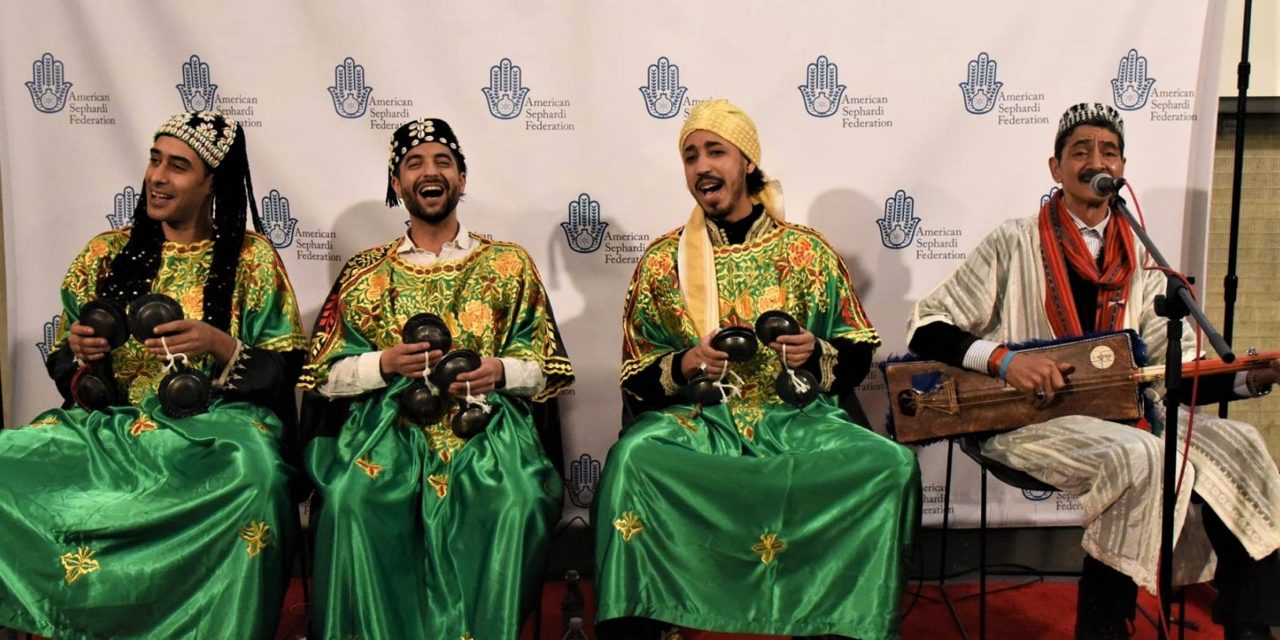
“They combined Islamic belief with pre- Islamic African traditions, whether local or sub- Saharan West African. Gnawa ‘spirit possession’ practices were not fundamentally outside of standard Moroccan Sufi practices, because firstly, the notion of a ‘spirit world’ is accepted in Islam- namely angels and jinns…and secondly, most sufi orders sought a form of spirit possession through study and meditation”.
The Gnawa people often expressed their belief in spirits through their infamous musical genre of “Gnawa music”. This music is characterized by its rhythmic and repetitive beat and is often referred to as trance music because listeners have been known to enter into a transient state while listening to it. The trance begins as a type of invasion, like an unwelcome visitor that violates and takes over the person’s body.
In her article about Gnawa trance music, Margaret A. Mills explains that this spirit possession “invokes the historical affliction of slavery”, this affliction being the slavery and emasculation of the Gnawa people.. However, after this initial affliction the person begins to understand how to master the spirit successfully in order to enter into a transient joy instead of spiritual torment.
[ads1]
Gnawa music and spiritual traditions not only had an influence on Jewish mystical practices, but they, also, had a profound impact on Sufi practices within the region; in fact, many of the people that adhere to Sufism listen to Gnawa music for its trance effects. Considered the mystical side of Islam, Sufism is known for its many ritual practices that have affected the spiritual landscape of Morocco for centuries.
“Sufism is one of the most dynamic and interesting dimensions of Islamic religious and cultural expression…[it] refers to a number of schools of Islamic mystical philosophy and theology…they have exerted considerable influence over the varied expressions of popular piety and devotion to shrines found throughout the Islamic world.”
Infusion of mysticism
A perfect example of the infusion of Sufi mystical practices, Gnawa music, Jewish tradition, and Islamic practices all into one entity can be found in the historic city of Fez. Every year Fez holds an annual Sufi music festival called “The Festival of World Sacred Music” in which numerous musical talents from around the world perform. The festival is in honor of Moulay Idriss who founded Fez in 809. There is a traditional Moroccan gravesite to commemorate the sainthood of Moulay Idriss in Fez, and this is particularly interesting because Fez was a historically Jewish city. Among the groups who perform include specialists in Gnawa music, and additionally Sufi recitations of the Koran called “dhikr” are among the music selection; this process of recitation is strikingly similar to Gnawa trance music, for the participants are known to enter into a state of ecstasy as the music and chant increases in time, tempo and rhythm.
[ads1]
In addition to Fez, each year there is a similar music festival that is held in Essaouira, however the main attraction of the event is Gnawa music. Many Sufis attend this, as well, and the festival is widely known for its infamous trance music in which the audience gradually enters into a trance state while listening to the rhythmic beat of the music. Many people are unable to explain how this happens and attribute this occurrence to an unexplainable phenomenon, as stated previously, here above, by Margaret A. Mills in her article on Gnawa music.
Gnawa trance music
Morocco’s immense cultural history is evident in the Jewish, Gnawa, and Islamic population. Despite the diversity of the region however, all three groups share similar practices regarding spirituality that they have developed over the centuries as a result of coexisting together. Both Judaism and Islam share the same conception of sainthood, and even share many saints whose tombs can be seen throughout the country; both religions, also, share the concept of veneration and pilgrimage to these holy sites, as well as a belief in baraka. The best infusion of the different cultures and religions is evident in the Sufi music festival in Fez, a Jewish city, with Gnawa Music as one of its main attractions. History may never know where many of the saints and spirit beliefs originated, however they are fully aware that they have, equally, impacted all the cultures and religions of Morocco, a plural country, par excellence.

To conclude
Morocco, which has a long history of religious diversity and tolerance, is known and recognized for the harmonious coexistence of Muslims, Jews and Christians. The freedom of religion is guaranteed by the Constitution and religion embraces all cults and all races in a framework of fraternity, love, respect, tolerance, forgiveness, human rights and freedom, values that the Kingdom has been appropriating for ages and continues to promote today.
Very much like Islam, Judaism has left an undeniable and indelible imprint on the subconscious and conscious cultures and way of life of all Moroccans. Jews have left Morocco in the 20th century but their cuisine, music, embroidery, celebrations, beliefs, monuments are part of the Moroccan spirit known as tamaghrabit, for life. The Jews have moved physically to others lands but their spiritual presence remains very strong in Morocco and part and parcel of Morocco for eternity and that is the best example of religious infusion and coexistence.

